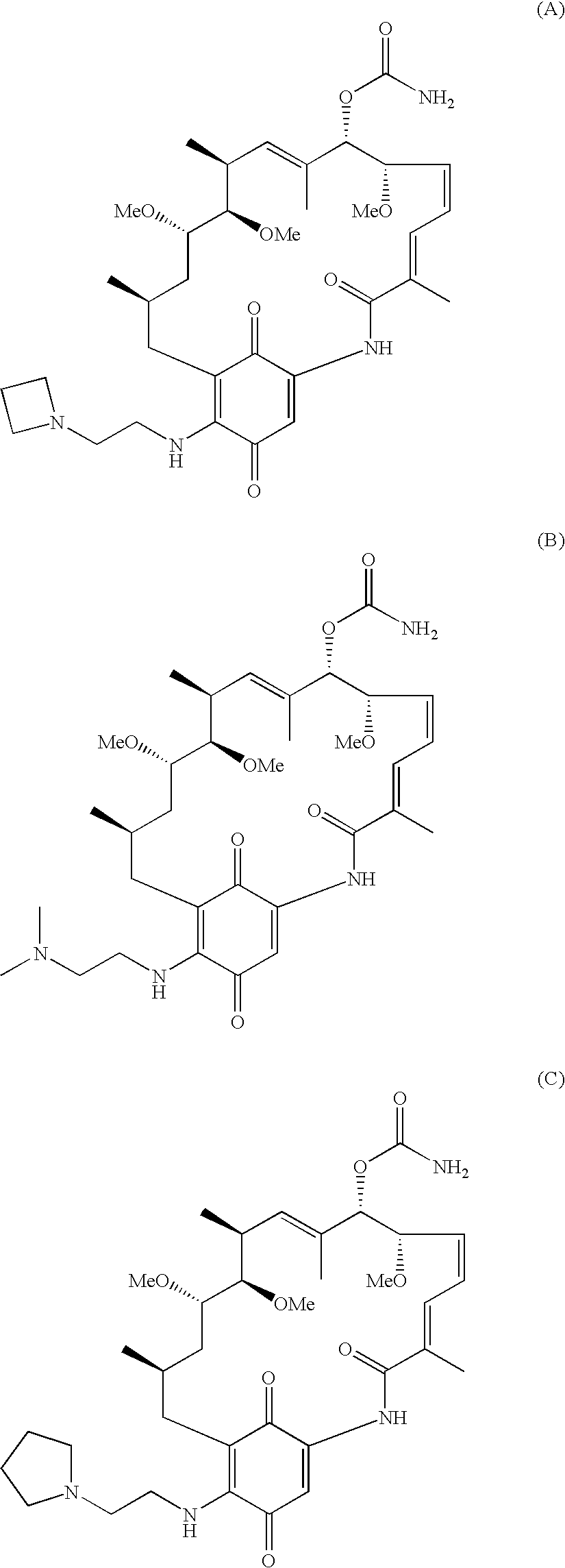Method for treating diseases using HSP90-inhibiting agents in combination with enzyme inhibitors
a technology of enzyme inhibitors and inhibitors, applied in the field of cancer treatment, can solve problems such as withdrawal from phase i clinical trials
- Summary
- Abstract
- Description
- Claims
- Application Information
AI Technical Summary
Benefits of technology
Problems solved by technology
Method used
Image
Examples
Embodiment Construction
The following Examples are provided to illustrate certain aspects of the present invention and to aid those of skill in the art in practicing the invention.
Materials and Methods
Cell Line and Reagents
Human colon adenocarcinoma cell line, DLD-1, and human breast adenocarcinoma cell line, SKBr-3, were obtained from American Type Culture Collection (manassas, Va.). DLD- 1 cells were maintained in RPMI 1640 medium supplemented with 10% fetal bovine serum, and SKBr-3 cells were cultured in McCoy's Sa medium supplemented with 10% fetal bovine serum. 17-DMAG and 17-AAG were obtained using published procedures. Other cytotoxic agents were purchased commercially from suppliers such as Sigma Chemical Co. (St. Louis, Mo.) and Sequoia Research Products (Oxford, UK).
Cell Viability Assay and Combination Effect Analysis
Cells were seeded in duplicate in 96-well microtiter plates at a density of 5,000 cells per well and allowed to attach overnight. Cells were treated with 17-AAG or 17-DMAG ...
PUM
| Property | Measurement | Unit |
|---|---|---|
| time | aaaaa | aaaaa |
| time | aaaaa | aaaaa |
| time | aaaaa | aaaaa |
Abstract
Description
Claims
Application Information
 Login to View More
Login to View More - R&D
- Intellectual Property
- Life Sciences
- Materials
- Tech Scout
- Unparalleled Data Quality
- Higher Quality Content
- 60% Fewer Hallucinations
Browse by: Latest US Patents, China's latest patents, Technical Efficacy Thesaurus, Application Domain, Technology Topic, Popular Technical Reports.
© 2025 PatSnap. All rights reserved.Legal|Privacy policy|Modern Slavery Act Transparency Statement|Sitemap|About US| Contact US: help@patsnap.com


